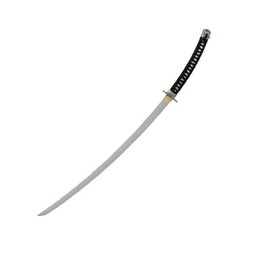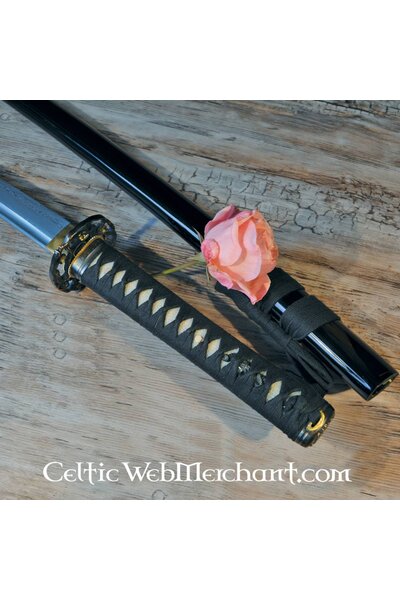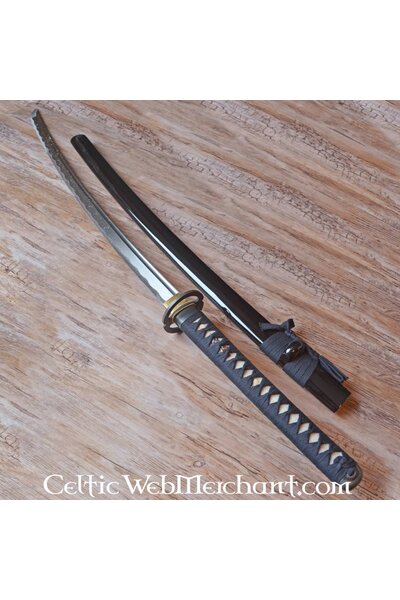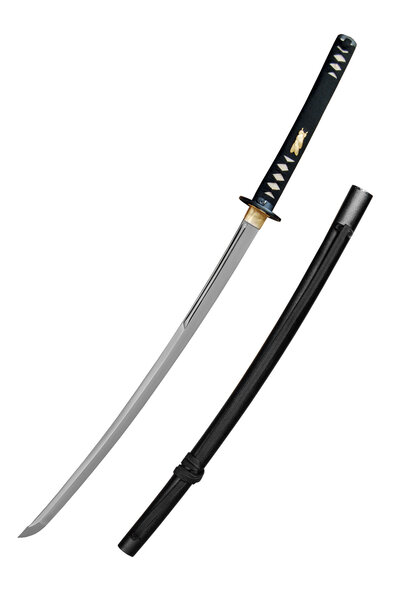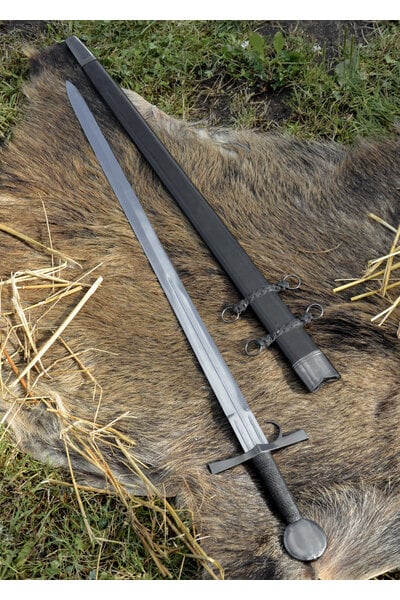Product description
The Kamakura period (1185-1333) was a decisive period in the history of Japan. It was marked by the first military government (Shogunat) which was established in 1192 by Minamoto no Yoritomo. The name of this period is derived from the former regime which was situated in the city of Kamaukra (approx. 50 km south-west of Tokyo). Together with armour (yoroi) and combat knives (tanto) the tachi was mostly worn on the battle-field. The Kamakura tachi can be distinguished from later periods by its simple look. Tachis from later period were richly decorated and had a ceremonial function.
This tachi has a length of 109 cm with a blade of 76 cm and a grip (tsuka) of 32,5 cm. It weighs 1240 g. The blade is made in the Shinogi-Zukuri style without a fuller, it is hand-forged of 1045 carbon steel and is sharp. The grip wrapping is made of black silk in the classic Hineri-Maki style underlaid with genuine shagreen. It has a black lacquered wooden scabbard (saya) and a leather baldric with high-quality two-coloured cotton. The tachi is delivered including a striking collector`s box.
John Lees models are inspired on historical originals and are high quality weapons. No plastics are used, only high quality authentic materials, like metal, brass, wood and shagreen. Every John Lee weapon is delivered including a seal and a certificate of authenticity.
Product details:
Blade Material: 1045;
Handle Material: Wood / ray skin / Cotton;
Sheath: Wood;
Handle Length: 32,5 cm;
Blade Length: 76,5 cm;
Overall Length (without sheath): 110 cm;
Weight (without sheath): 1240 g
This item is produced in limited quantities only. This means that every piece is unique. Sizes & finish may vary lightly from piece to piece.
We do not sell this product to customers under the age of 18. Click here for more information on the European arms acts.
Packaged with 100% recycled material
When packaging this item, we exclusively use 100% recycled plastic and recycled paper/cardboard from FSC certified forests. We reuse a large part of the material directly without the intervention of a recycling process.
Recycle the material by separating your waste:
1. Cardboard: separate or reuse your paper.
2. Plastic cushions, clothing bags and plastic tape: separate or reuse your plastic. If possible, pierce the cushions with a volume reduction needle.
3. Paper packaging for jewelry and small items: these have a plastic inner layer. Remove these, then separate your paper and plastic.

